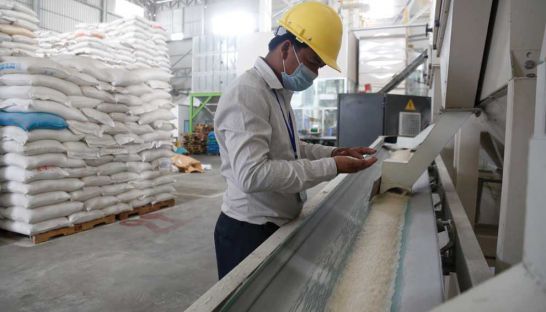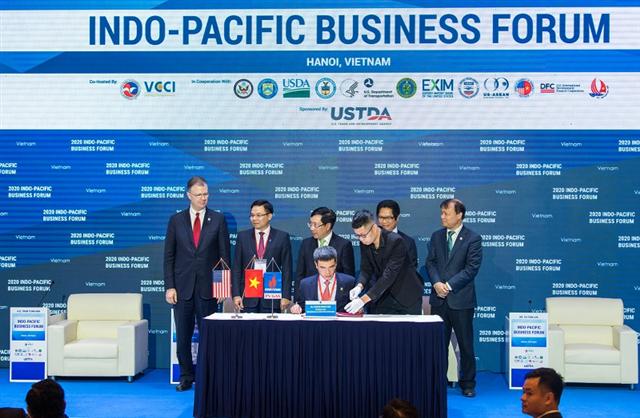A challenging year for rice exports
A challenging year for rice exports
The growth of rice exports slowed to a crawl last year, according to new data, signalling that government initiatives to increase the competitiveness of Cambodia’s mainstay crop had fallen short and raising concerns about the future of the agricultural sector.

According to data received from the Ministry of Agriculture yesterday, Cambodia’s rice exports totalled 542,144 tonnes last year, a mere 3,700 tonnes, or 0.7 percent, more than the country shipped in 2015. The nominal increase followed a growth spurt in 2015 that saw exports climb by 39 percent that year.
Hean Vanhann, undersecretary of state at ministry, said the slowdown in export growth suggested previous initiatives had failed and the government needed a new strategy to secure the future of Cambodia’s rice industry.
“The decrease [in export growth] is a clue that we must be concerned about our rice industry and all stakeholders have to take action together,” he said yesterday.
He said in the past six years the government has rolled out various strategies for the sector, including initiatives to increase paddy rice production, improve the capacity of harvesting rice, increase milling capacity, and promote marketing and exports.
“The four strategies of the government since 2010 have not worked well together,” Vanhann argued.
“We need a new strategy to ensure that all the production lines are working smoothly. If our rice production increases but marketing is slow, how can it ever work?”
He cited both internal and external factors, noting that the international price of rice was declining, making it increasingly difficult for Cambodian rice to compete in global markets. Meanwhile, the domestic rice industry does not have sufficient milling or storage capacity, or enough capital, to support year-round, round-the-clock exports.
Hun Lak, vice president of the Cambodian Rice Federation, said 2016 proved to be an exceptionally challenging year for Cambodia’s rice industry. He explained that local exporters had to compete with rival rice-producing countries that were flooding the market with their product, while local farmers struggled against low paddy prices exacerbated by the sector’s shortage of capital and storage capacity.
“We confronted a lot of challenges in the rice industry during the year, both internal and external,” he said.
“But if we look back at all these challenges, we should appreciate the result, which showed we can maintain a stable level of exporting.”
Lak projected that rice exports would grow this year following the signing of export agreements with China and Vietnam, but the industry “must prepare well in advance to meet its target.”
Commenting on the government’s disbursement of $27 million of emergency loans to support rice millers in buying paddy, Lak said the financial assistance came “a bit late”, but was still able to help farmers by propping up falling paddy rice prices.
“The disbursement of the government’s emergency loans was too late for rice exporters to sign contracts with buyers, though came early enough to support paddy prices for farmers,” he said.
“Next year, the loans should be provided early enough for rice millers to negotiate export contracts with buyers.”
Song Saran, CEO of Amru Rice, said looking back on 2016 exports, the result was “acceptable,” but not satisfying. He said Cambodia’s supply chain was flawed.
“Our supply chain is not balanced, as if you observe the export trend [during the course of the year] it is uneven,” he said.
“Our supply of rice paddy is limited at the beginning of the year, but we have an oversupply of paddy at the end of the year.”
Saran added that despite the high quantity of rice exported, the commodity’s low price level was causing profits in the industry to decline.



